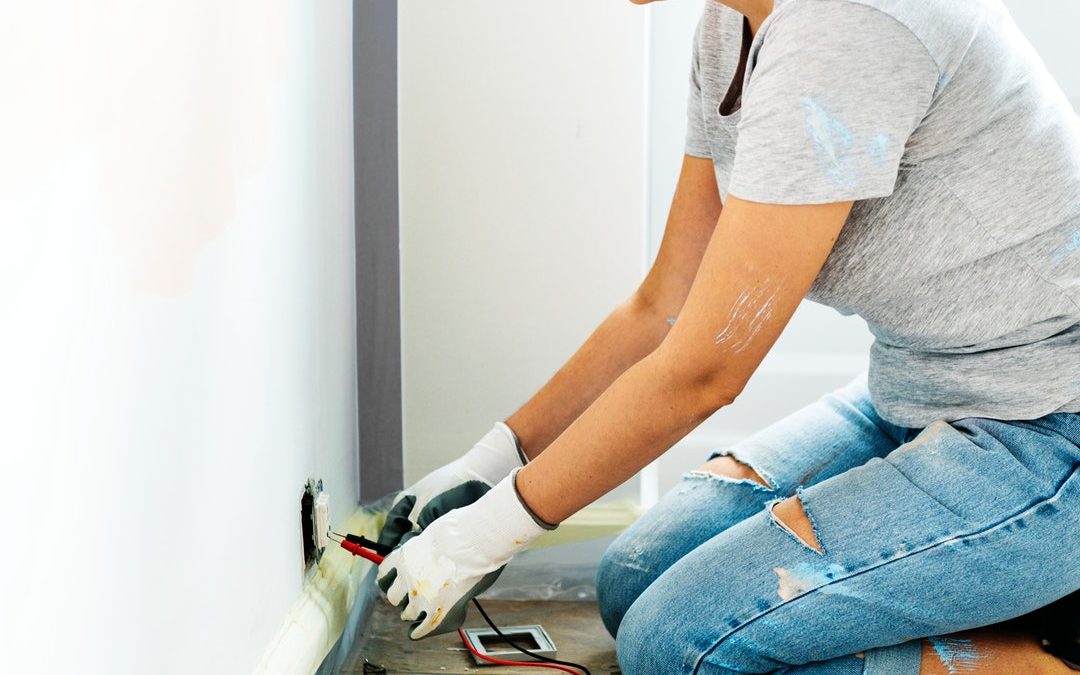You’ve found the perfect buyers, they’re ready to sign the papers and you’ll finally have sold your house. But it’s not over yet. There’s one thing that could bring it all crashing down in flames: a home inspection.
If you know the most common issues that home inspectors find, you can work to resolve them so that you ensure you pass the inspection with flying colors.
Keep reading to find out the common problems that home inspection companies frequently come across.
1. Water Leaks
Water leaks are not only one of the most common issues found in home inspections, they’re also the most widely spread throughout the house. As water damage is one of the most severe issues recognized by a home inspector, every small leak is taken quite seriously.
Water leaks occur due to a lack of maintenance and care for plumbing pipes and water entry points. It’s difficult to locate leaks as most are hidden from sight, behind walls, or underneath floors.
Finding leaks is important as a small leak can turn into a big problem that risks structural damage.
2. Damaged Roof
It’s really important that a home inspector carefully checks a roof as it’s one of the most expensive repairs you’ll have to make on a home. Unfortunately, it’s also one of the most common home inspection issues.
Problems that an inspector commonly sees on roofs are missing or broken shingles, a tilting roof, and clogged gutters.
The older the home, the more likely it is that there is damage to the roof. It’s recommended that homeowners get their roofs inspected annually if it’s over 10 years old.
3. Electrical Problems
Electrical hazards top the list of home inspection problems as there are plenty of issues that present themselves when it comes to the electronics of your home.
Inspectors routinely encounter issues with wiring. These include polarity, missing junction boxes, and damaged receptacles. They may come across faulty GFCI outlets, outdated electric panels and wiring systems, painted outlets, and more.
Checking for electrical issues is one of the most important parts of an inspector’s job as electrical problems are expensive to repair and also very dangerous. They pose a massive fire risk and it’s vital that homeowners ensure their electrical system is up-to-date and functioning correctly.
4. Plumbing, Sewage, and Septic Issues
Damaged pipes, backed-up sewage systems, malfunctioning water heaters, and mold and mildew all make for a really bad home inspection.
Plumbing issues are a common problem in older homes especially, as there are still a lot of outdated and inadequate plumbing systems that are still in use.
It’s vital to recognize plumbing problems as a small issue can create big problems throughout your entire home.
While some plumbing issues are very noticeable, such as water damage or a constantly running toilet, others are difficult to identify. A home inspector will look for broken and corroded pipes, cross-connection issues, low or high water pressure, and more.
5. Trip Hazards
A trip hazard is present when there’s a sudden change in the horizontal or vertical separation on a walking surface.
This walking surface needs to be in an area that people would normally walk. If you have uneven tiles in the corner of your bathroom behind the sink, for example, it’s not considered a trip hazard as no one will walk there.
The change in the elevation needs to be 1.5 inches or more for a home inspection company to consider it a trip hazard. However, inadequate lighting over stairs and steps is sometimes considered trip hazards too.
Common trip hazards include uneven or brown tiles, cement walkways, or pavers, and tree roots that have broken through walkways.
6. HVAC Issues
Every home inspection includes an analysis of your heating and cooling systems. This is important for a couple of reasons. First of all, as a homeowner, you would want to ensure that you have adequate heating and cooling for the entire year — especially if you live in extreme temperatures.
Secondly, a faulty HVAC poses a fire risk and the risk of spreading mold and mildew when there is poor ventilation. HVAC issues such as wiring and ventilation problems are relatively common in home inspections. This can be avoided with regular maintenance and care.
A home inspector will check out your fireplaces, sprinkler systems, and furnaces, too.
7. Structural Issues
Structural issues are not only relatively common, but these issues are also the most severe and expensive problems that home inspectors identify. Structural issues usually occur due to cumulative problems created by neglecting other issues mentioned on this list.
The structure includes foundation, walls, floor, and roof — all of which the home inspector will take into account. Common issues may include bulging walls, uneven flooring, foundational cracks, drainage issues, and more. As to be expected, older homes are more susceptible to structural damage.
Avoid Common Issues With Home Inspection
A home inspector can recognize common issues throughout your home that aren’t immediately apparent. This is important for mitigating fire hazards as well as more severe structural damage in the future.
If you’re looking to sell your home then it’s imperative that you have a home inspection to help negotiate the best deal. As a seller, you need to avoid inspection nightmares by being as prepared as possible.
At Class Home Inspection we promise a thorough examination of your property to let you know exactly what needs to be fixed. View a sample inspection report and contact us today to schedule an inspection.

